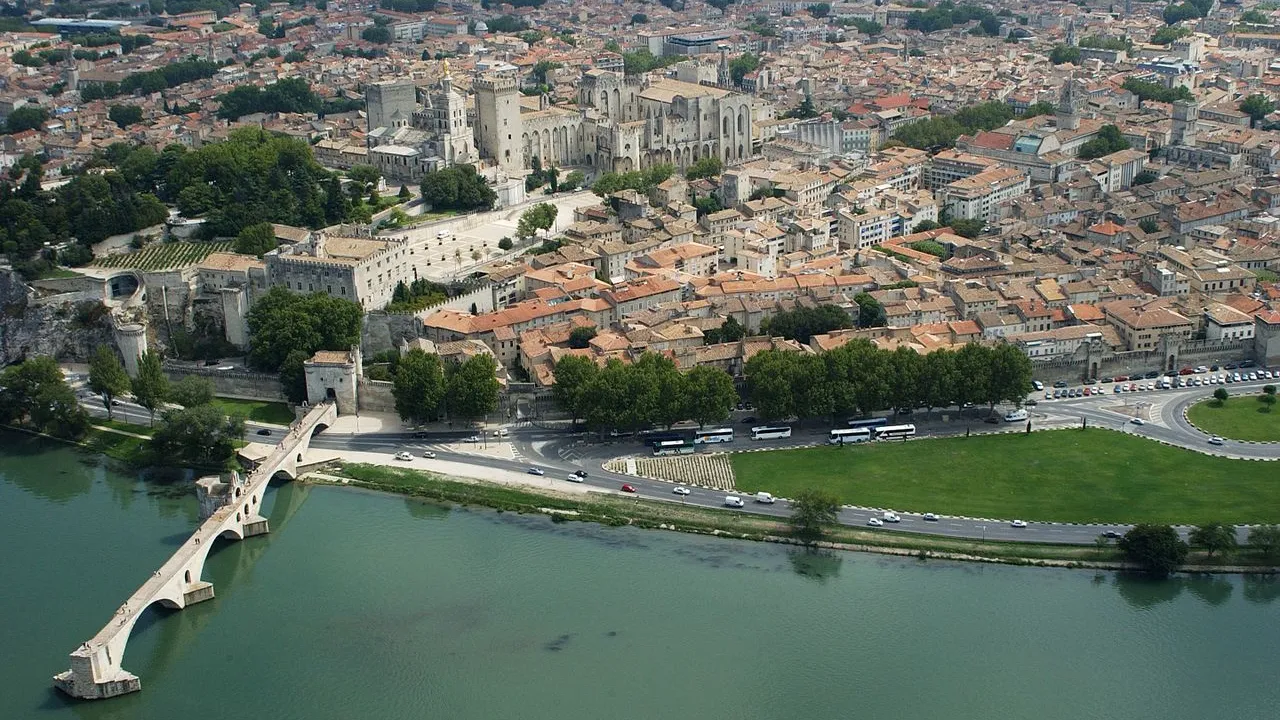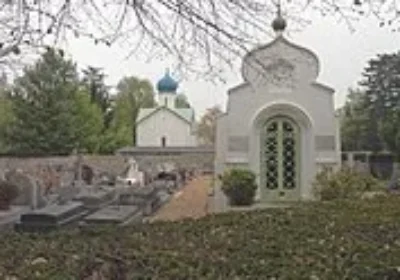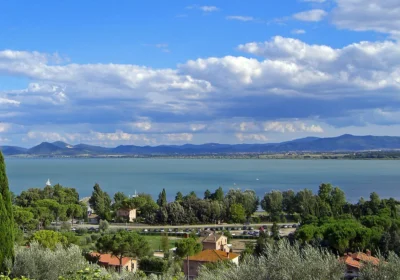It is one of the most interesting cities in France – a city of popes and theaters, churches and bells, historical monuments and museums.
In ancient times, Avignon was the capital of the Gaulish tribe of Cavars and was called Aeunion (“Lord of the Waters”). The Phoenicians built a river port here, later improved by the Romans. Until the beginning of the XIV century in the history of the city did not occur in any significant events, but in 1309, at the insistence of the French king Philip IV Pope Clement V moved his residence from Rome to Avignon. Thus began the “Avignon Captivity of the Popes” that lasted about 70 years. From 1309 to 1377, seven popes succeeded each other on the holy throne located in Avignon. In 1348, the city was officially bought by Pope Clement VI from Queen Joanna of Naples (as contemporaries believed, this sale for nothing the queen atoned for the sin of masculicide). Under papal rule, the city became a shelter for all exiles, smugglers, counterfeiters, outcasts. Petrarch called Avignon of that time “the second Babylonian pandemonium” and “the city of sin”. The city remained under the control of the popes until 1791.Being for a long time the capital of the Catholic world, the city was actively built up with churches, monuments, mansions. Avignon used to have 20 male and 15 female monasteries. Rabelais nicknamed it “the ringing city” (la ville sonnante) because of the constant ringing of bells. During the revolution some churches were destroyed or used for other purposes, but many medieval buildings have survived. The main legacy left by the papal court is the largest in Europe Gothic Papal Palace of the XIV century, which covers an area of more than 15 thousand square meters. The palace was built over a period of 30 years and consists of two parts: the Old Palace (1334-42) and the New Palace (1342-52). Externally it is a real fortress: high, thick walls with narrow windows, powerful arches and wide loopholes give the castle a traditional for medieval buildings severe and impregnable look. Inside there is the Hall of Consistory, the walls of which are hung with tapestries and portraits, the Chapel of St. Jean with almost intact wall paintings, the Chapel of St. Marcial with frescoes by Giovanetti, the Stag’s Room painted with scenes from secular life, the Pope’s Quarters and other equally interesting rooms.The city is also known for another architectural monument of the Middle Ages – the famous Pont St Bénezet (Pont St Bénezet) of the XII century, which, as well as the Papal Palace, is inscribed by UNESCO in the list of World Cultural Heritage. Its construction took eight years. The bridge spanned the two arms of the Rhone for 900 meters. In 1226 it was almost completely destroyed, only four spans and the Chapel of St. Nicholas survived.Another decoration of the city is the Gothic cathedral Notre-Dame des Doms (Notre-Dame des Doms), which houses the bishop’s chair of white marble, frescoes, paintings, mausoleums of Popes Benedict XII and John XXII. In this cathedral there is one of the most famous organs of the world – the “golden organ”.Avignon is famous for its museums.
The Palais du Roure houses the Museum of Jewelry and the Museum of Provençal and Italian Art. Here you can see illustrations of Dante’s Divine Comedy, engravings by Piranese, as well as a collection of figurines of saints, letters of Obanel and his friends, the famous stagecoach of Mistral and a unique collection of bells. The Musée Louis Vouland presents decorative arts from the 17th and 18th centuries. The Museum of the Small Palace (Musée Petit-Palais) – the former residence of bishops and archbishops – has a collection of Italian artists of the XIII-XVI centuries. The famous Botticelli Madonna and Child is kept here. The exposition of the Museum Jean Vilar (Musée Jean Vilar) is devoted to theater and staging art. The Calvet Museum exhibits a large collection of archaeological finds and paintings of the XVI-XX centuries.The best time to visit Avignon is during the International Theater Festival, which takes place annually in July. July Avignon is a large theater fair, which brings together numerous theater companies, musicians, dancers and spectators from all over the world. In the city’s picturesque square, Place de l’Horloge, huge crowds fill the terraces of cafes and restaurants, where you can relax and gain strength for the night ahead while waiting for the performance.

















